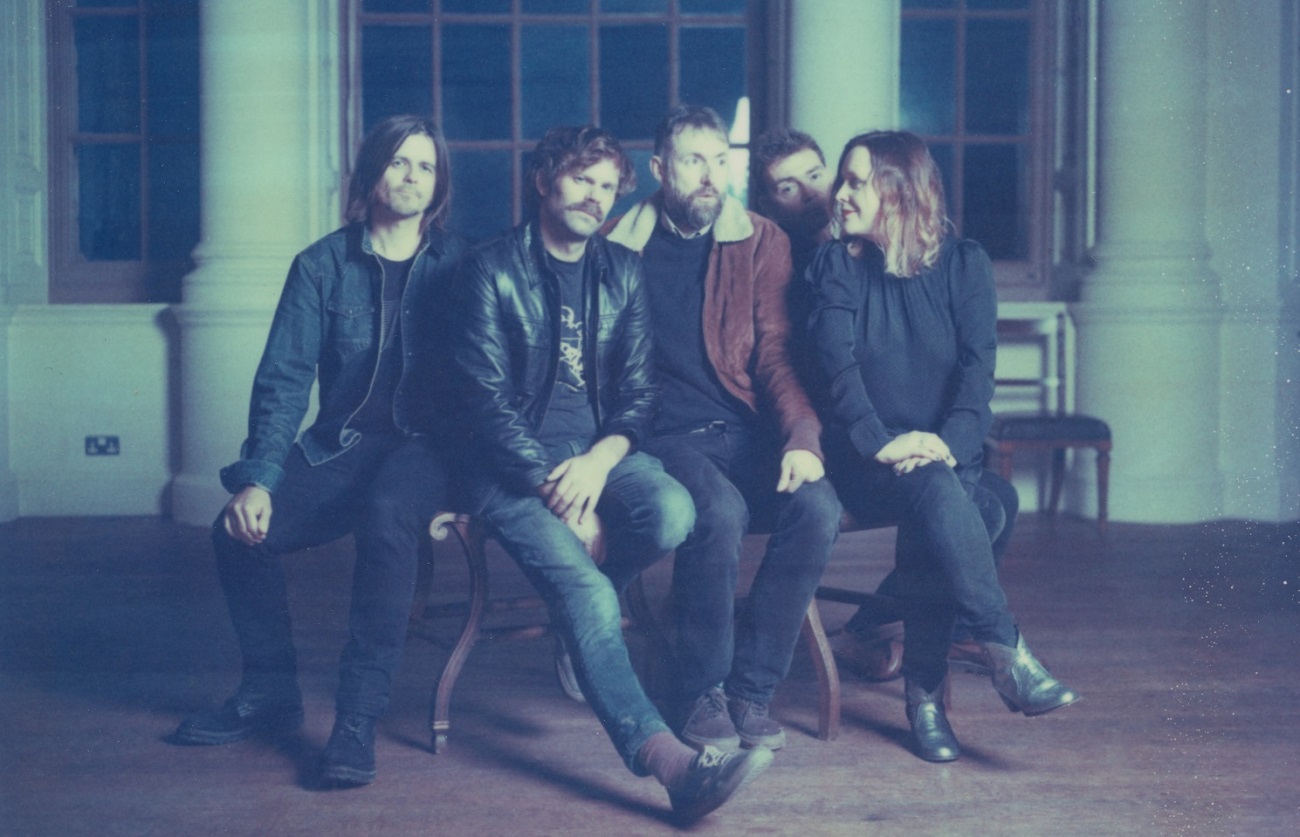Slowdive formed in Berkshire, England in 1989. The UK quintet’s initial run lasted six years, begetting three LPs and seeing them become leading proponents of the shoegazing indie rock sound. But after assorted personnel changes and record label difficulties, the band called it quits shortly after releasing Pygmalion in 1995.
Then after 20 years of silence, Slowdive reformed for a bunch of festival dates in 2014 before unveiling their long-awaited fourth album, Slowdive, in May this year.
“When we got back together the hope was that we would do a new record,” says guitarist Christian Savill. “We didn’t want to be a band that just played old songs.”
The band’s five core members worked on a slew of side projects in the intervening years. Notably, singer/guitarists Neil Halstead and Rachel Goswell teamed up in Mojave 3, drummer Simon Scott fronted Televise, and Savill formed the band Monster Movie.
So they weren’t entirely out of practise, but that didn’t guarantee Slowdive could simply pick up where they’d left off.
“When we were in a band in the ’90s we had momentum,” says Savill. “You start a band and you immediately start rolling and writing songs, whereas we were coming from a complete stop so we had to get that movement again.”
A major background detail during Slowdive’s original run was the aggressive and often nasty attention of the British media. The role of the music press has significantly changed during the last 20 years, with online media opening up the journalistic landscape and reducing the power and influence formerly held by an elite group of publications. On top of that, the advent of music streaming services and social media means listeners can find their own way to a musicians’ work.
These factors helped reduce the pressure on Slowdive during the making of the new album.
“In the old days it seemed like the music papers, especially in England, could almost control [a band’s fortunes], and they still can to a certain extent,” says Savill. “But also bands have their direct lines to people who like the band now, with social media and stuff. So you’ve always got that to gauge what the people who actually like the band, what they’re thinking, rather than a select few who write about music for a living. Just because they might not like it doesn’t mean that other people might not like it. It feels better now, to be honest.”
Along with these changes, Slowdive’s relative creative and commercial freedom allowed them to pay attention to what really mattered during the album’s construction.
“We were just totally focused on, ‘Do we like it?’ And when we were recording it we didn’t have a record company. We were just recording it for ourselves to see if we liked it,” Savill says.
“It was really good fun to get in a studio and hang out. We even went to our original studio we did the original records in, which was fun.”
Since Pygmalion came out, the cultural relevance of guitar music has ebbed and flowed. Right now, the guitar isn’t central to any of the major musical movements or trends. However, Slowdive doesn’t sound anachronistic, which has as much to do with the quality of the group’s songwriting as their lateral implementation of the guitar.
“I don’t think we ever feel like we are definitely a guitar band, even though live we pretty much are,” Savill says. “But we use all kinds of stuff. Simon’s really heavily into electronics and he brought some of that into this record, albeit on a limited scale. But we’re looking at expanding that on the next record.”
The band members’ tastes have perceptibly moved beyond guitar-centric indie rock and this has influenced their choices for support acts over the last few years.
“Blanck Mass just toured with us. It was brilliant to watch. He doesn’t play guitar and I love watching it because I don’t understand what he’s doing. He’s making all these sounds and you’re just thinking, ‘How the hell’s he doing that?’ Whereas when you see a guitar band you think, ‘Oh okay, I can understand what’s happening there.’”
Thanks to the band’s open-minded approach to songwriting and production, the new record contains a range of textures and dynamics, from the full-on saturation of ‘Star Roving’ to the minimalist elegance of ‘Sugar For the Pill’ and the spacey psychedelics of ‘Go Get It’.
“Once the songs started happening, you could see a direction taking shape. We’ve never been the kind of band that says, ‘All right, we need a three-minute banger now.’ We don’t work like that. We just work stuff out as a band that we think sounds good. Or sometimes Neil [Halstead] will come in and say ‘I’ve got this tune here,’ and we’ll work on it that way. I don’t think we ever set out and say, ‘This needs to be such and such sort of album.’ We’re just making it up as we go along without thinking about it too much.
“Something happens and eventually we just do this kind of music. The problem is when we do think about it too much then end up not liking it or getting in a muddle. Whereas to not think about it, it just happens, which is nice.”
More than demonstrations of individual prowess or brilliance, Slowdive showcases the collective strength and complementary musical personalities of the band’s five members.
“For me that’s why I always enjoyed being in the band. My favourite bits of being in the band have been where we’re all just playing in a room together and we just come up with something and we all look at each other and go, ‘Wow.’”







